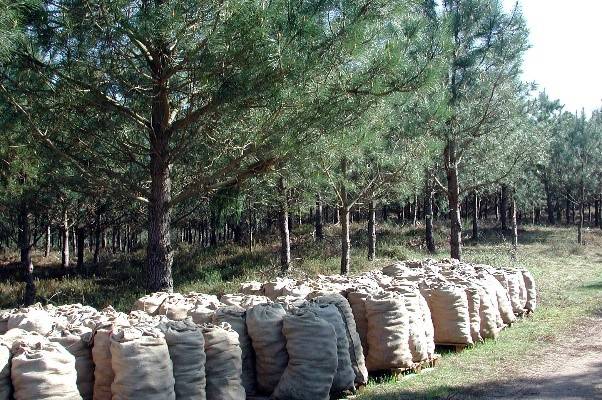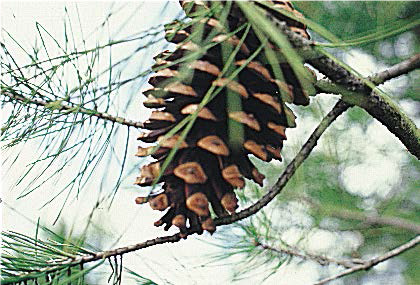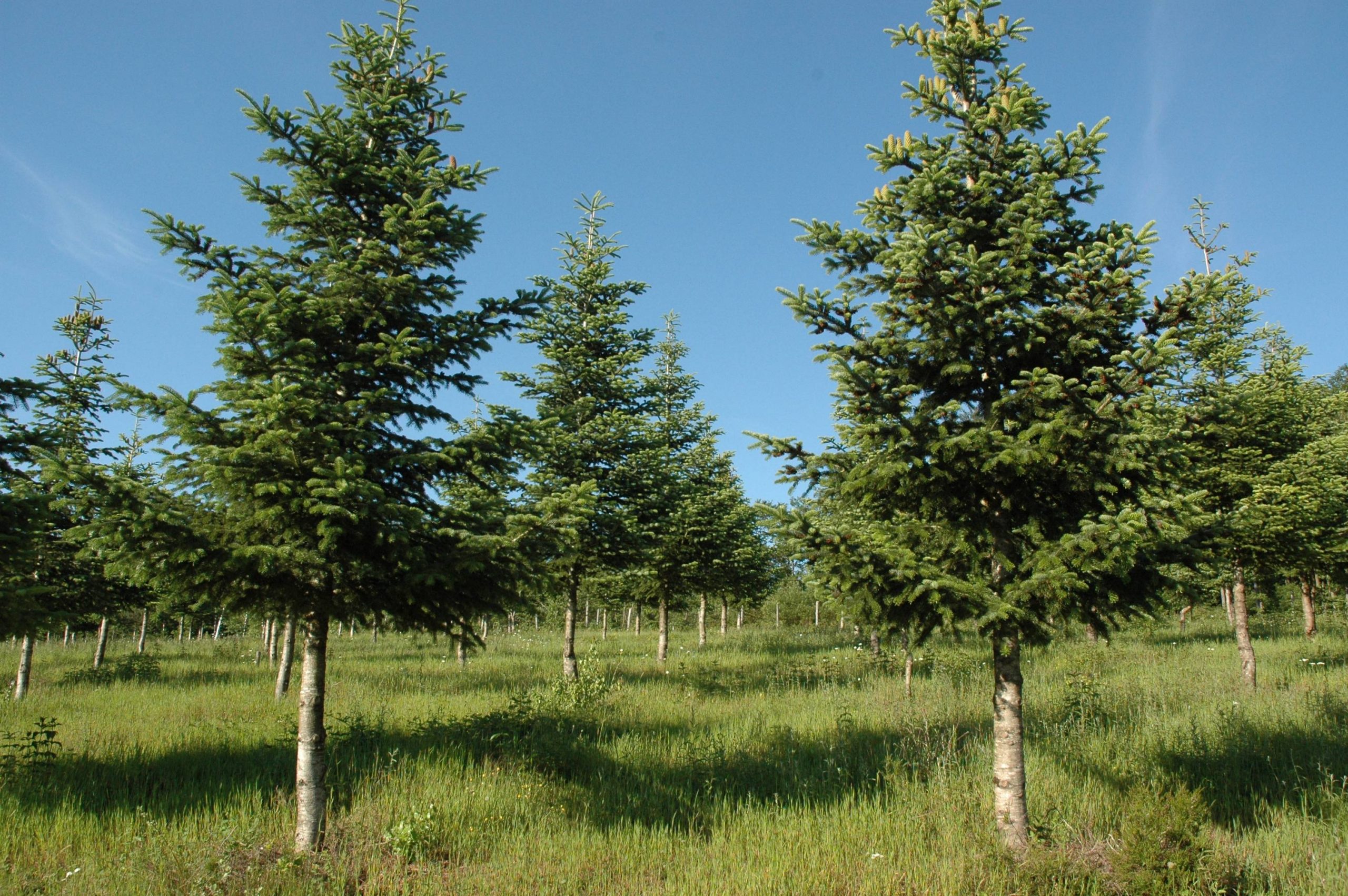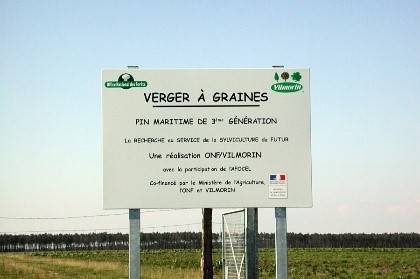Forest Reproductive Material Regulations
Regulations are in place to ensure the genetic quality of forest reproductive material (FRM).

EU Regulations
Marketing of Forest Reproductive Material is governed by regulations set down in EU directive no. 1999/105/CE which came into force on 1 January 2003. It was transposed into French law on 10 October 2003 and concerns 51 timber species. The directive applies to all grains, plants or parts of plants intended for planting under technical conditions for primarily producing wood or likely to have an impact on forest genetic resources.
Types of Forest Material
Planted forests (with man-assisted regeneration) are one of two important methods for renewing and restoring forests. 65 species and hybrids used in France for planting forests are currently governed by regulations guaranteeing genetic and external qualities (vigour, shape). Five types of basic material are recognised by the EU directive:
- Seed source: Trees within an area from which seed is collected
- Stand: A delineated population of trees possessing sufficient uniformity in composition
- Seed orchard: A plantation of selected clones or families which is isolated or managed so as to avoid or reduce pollination from outside sources, and managed to produce frequent, abundant and easily harvested crops of seed
- Parents of family: Trees used to obtain progeny by controlled or open pollination of one identified parent used as a female, with the pollen of one parent or a number of identified or unidentified parents
- Clone: Group of individuals derived originally from a single individual by vegetative propagation.
The main sources of seed supply are seed sources, stands and seed orchards – with the exception of poplar trees and (to a lesser extent) birch trees, for which there are clonal varieties. These three categories guarantee the production of high-quality FRM, for many major species. Furthermore, a large number of seed orchards set up and financed by the State have entered production and are producing seed in sufficient quantities.
Marketing Categories for FRM
FRM which is subject to EU regulation is certified by the State to ensure its genetic quality and guarantee its origin. To gain access to this information, the end user (the forest owner) must request a document from the supplier which provides all necessary references.
Forest reproductive material is divided into the following marketing categories:
- “source-identified” (yellow label)
The geographical origin is the only information available for materials classified as identified. These are harvested in a seed source, i.e. a set of trees of undetermined size, located in a known harvest zone, corresponding to a single region of origin. There is no preselection of these resources. However, harvesting from isolated trees, hedges or lines are prohibited for seed intended for forestry purposes.
- “selected” (green label)
Selected material is from stands chosen mainly on the basis of phenotypic traits (vigour, tree shape, disease resistance). Most trees in these stands must be true-to-type. In 2017, for 24 forest species, 1413 stands were listed, covering a total area of nearly 60,000 ha.
- “qualified” (pink label)
Material classified under the qualified category is artificial, contrary to that from most selected stands. This material is produced in seed orchards (plantations of family clones or parental stock) set up specifically to produce seeds of superior genetic quality. To this end, the raw material components previously undergo individual phenotypic selection in the forest or under test conditions on the basis of criteria such as vigour, tree shape, disease resistance or wood quality.
- “tested” (blue label)
The highest amount of information is available for tested material. The superiority of this material, relative to one or several reference materials for the species, is demonstrated through comparative tests or component assessments. A technical regulation, in accordance with Article D 153-3 of the forestry code, defines the admission criteria for concerned species and species groups. Basic material can be accepted temporarily if its superiority has not been entirely demonstrated by comparison tests due to the experimental duration being too short. Basic material cannot remain temporarily accepted for more than ten years. After this time, it is either delisted or accepted permanently.
Equivalences can be accorded by decision of the European Commission or by Member States, under certain specific circumstances. This authorises the permanent importation (non-quota) of FRM from third countries (outside of the EU), such as the American Douglas or the European Larch which belong to provenances and/or categories with equivalences for certain marketing categories. Once imported by the EU Member State, these materials may freely circulate in the single market.
A specialised page on the Ministry of Agriculture website provides access to a simplified list of basic material for regulated FRM production in France, for a certain number of EU Member States, as well as a consolidated list of all basic material of regulated forest species in the EU.
Genetic Improvement of Forest Species
Genetic improvement programmes have been used to develop improved forest varieties of tree species used for reforestation. For forest trees, the main criteria included in breeding programmes concern: tolerance to biotic stress (disease, insects) and abiotic stress (cold, drought), volume growth, architectural quality (trunk and branches) and wood quality. In addition to clones available for poplar and cherry trees and stands resulting from provenance testing, programmes mainly involve seed orchards. These orchards were mostly set up from 1972 onwards, in the framework of the national seed orchard programme. Private initiatives have also helped to create maritime pine, cherry, and common ash orchards.

CTPS Forest Tree Section

The role of the CTPS Forest Tree Section is to advise the Ministry of Agriculture on all decisions concerning FRM regulations, in particular:
- Including new species in the list of regulated species
- Including, changing, delisting basic material from the national register
- Validating, changing technical regulations for admission in the tested category
- Using, by way of derogation, non-registered FRM (e.g. in cases of shortages)





